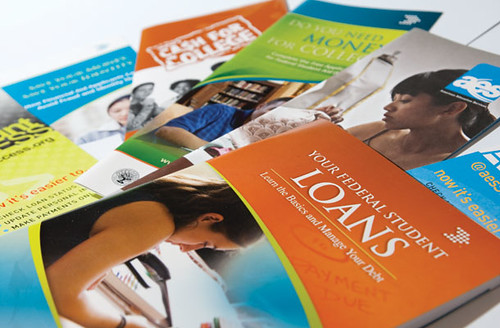As part of President Obama’s efforts to make college more affordable, the current student-loan program could find itself on the chopping block.
As the election year unfolds, politicians are looking to rework financial aid.

In his State of the Union address last month, President Obama proposed an expanded student-loan forgiveness program, while urging the Senate to pass his education reform bill.
Although the legislation passed the House four months ago, it hasn’t moved since.
“The Republicans are against it because the banks are making a lot of money,” said Bill Stull, chairman of Temple’s Department of Economics. “People don’t fight hard with lobbyists unless they’re making a ton of money.”
The bill, known as the Student Aid and Fiscal Responsibility Act, would increase the maximum Pell Grant by $200 for the next school year by overhauling the subsidized student loan program.
Supporters said revamping financial aid could save the Department of Education at least $80 billion in the next 10 years.
Currently, under the Federal Family Education Loan Program, the government contracts the subsidized loans through private lenders. The Department of Education then pays the loan’s interest while the student is enrolled.
“We’re paying a lot of money to pay these middle men,” Stull said.
Under the pending bill, the department would only offer direct subsidized loans though the United States Treasury.
The government also pays 97 percent of the loan if the borrower defaults after graduation. Stull said the lenders are being overcompensated because they are making loans without risk.
“This is socialism for the banking industries,” he added.
But Richard Castellano, spokesman for Sallie Mae, said there is another proposal in the Senate that would also reform the student loan program. Backed by a coalition of lending companies, the proposal would save the department nearly as much money for Pell Grant increases, while still allowing it to subsidize for the private sector.
“[This proposal] is a viable alternative that saves the same amount of money without costing jobs or losing the best service through competition,” Castellano said.
The company spokesman said the best service and lowest rates for loans comes from the competition of the private sector.
But House members who backed the original legislation said rates for direct loans would be the same as the subsidized loans for borrowers. Rachel Racusen, spokeswoman for House Education and Labor Committee Chairman George Miller, D-Calif., said these lenders were providing an unneeded service.
“There’s simply no reason to keep pumping taxpayer dollars into a broken system when the federal government can provide the same low cost federal loans.” Racusen said. “It’s ridiculous to argue the federal government is ‘overstepping its bounds,’ when the federal student loan programs are already a federal program.”
According to the lending corporation, Sallie Mae would have to lay off a third of its workforce and change its entire structure. The Virginia group employs 8,000 people, according to a 2010 Hoover Report.
Temple’s Financial Department Chairman Ken Kopecky said working with private industries does have its benefits.
“If you have the private sector, there’s some incentive to be efficient,” Kopecky said. “You know there’s going to be a delay if you deal with the federal government.”
Besides subsidized loan reform, President Obama also proposed a loan forgiveness program that would cancel a student debt after 20 years.
Under the plan, graduates would only have to put 10 percent of their yearly salaries toward federal loans.
Recipients of private subsidized and direct loans would qualify.
Kopecky said while the idea is a subsidy for education, it might cost taxpayers.
“It’s a form of redistribution of wealth,” Kopecky said. “You can’t get something for nothing.”
Stull said relieving people from college debt would hardly touch the economy since it would only affect a fraction of U.S. citizens.
“But we really don’t know because we’re talking about a 10-year prospect,” he added.
This would be an expansion of the College Cost Reduction and Access Act. Signed into law in 2007 by President Bush, it caps payments for federal loans at 15 percent of borrowers’ incomes and stops dues after 25 years. Those with jobs in the public sector could finish payments after a decade.
Ian Romano can be reached at ian.romano@temple.edu.



You are missing something here Mr Still. The current interest rate formula for lenders holding student loan assets produces a yield of approximately 2.00% The difference between the stated loan rate to the borrower (6.80% – 2.00% = 4.80%) is rebated to the US Department of Education (USDE). Direct Loans made by USDE also charge 6.80% but they don’t rebate anyone. It would appear that the USDE is getting way richer than any bank. They just call it ‘savings’.
WHATS THE TOLL FREE NUMBER TO CALL ABOUT THE STUDENT LOAN ? THAT OBAMA GRANT